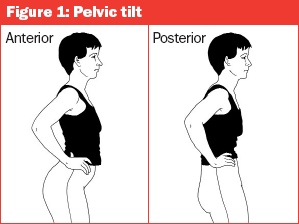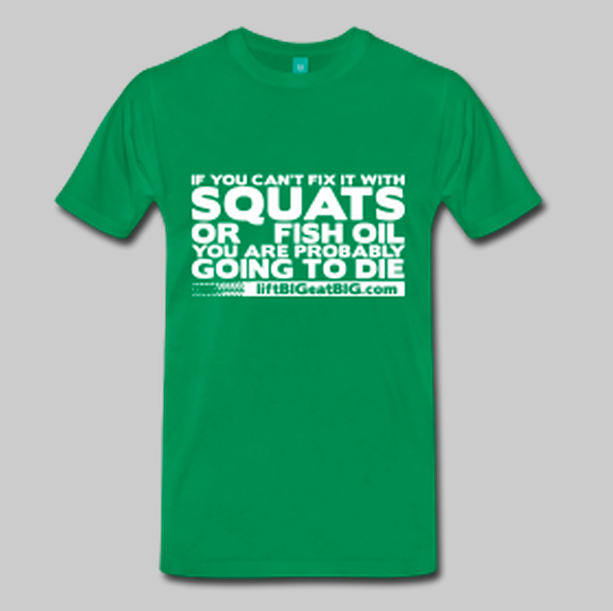5 Time Efficient Training Hacks
No one likes spending super long sessions in the gym…
Well maybe you do, but it might not always be optimal and if you’re trying to form a habit of hitting the gym regularly it may be difficult to keep doing it day in, day out.
Or you might be neglecting other much more important aspects of your life. There is more to life than guns and abs after all 🙂
Try these training hacks to cut down the time you spend in the gym and still make some sweet gains.
Training Hack #1. Superset your movements
Try supersetting exercises, i.e. performing them back to back.
Tons of people already do this training hack, but absolutely butcher the execution.
Allow me to explain:
This technique lends itself well to training smaller muscle groups together as they often don’t require much recovery time between sets. Supersetting exercises hitting opposing muscle groups also works well. It can also be performed with a big muscle group along with a smaller one, as long as the exercise hitting the smaller muscle group doesn’t detract too much from performance of the bigger one.
If you’re going heavy I also recommend taking at least a minute rest between exercises to give you a chance to recover slightly and perform the exercise with a decent intensity and keep technique in good shape.
Here are some examples of good pairings:
Bicep curls + tricep pressdowns
Bench presses + pull ups or rows
Romanian deadlift + split squat
Some poor ones:
Squat + deadlift
Overhead press + deadlift
Pull ups + bicep curls
In the first two examples, the exercises impose a very high demand on the body and it would be very difficult to maintain good form whilst performing them back to back unless you kept the loads light.
In the third example, the muscle groups involved are too closely related so one would negatively impact strength on the other.
As a final note, performing low level core work/corrective exercises and stretching in between sets would also be a good option.
Training Hack #2. Drop the intensity
If during every single set of your session you pull a face like this guy to get the last rep out… you’re doing it wrong:
Intensity isn’t necessarily defined as how hard you’re going at it in the gym, i.e. the effort you’re putting in. When we are talking about lifting weights, intensity is defined as how close you are to your max.
Now, going heavy is what helps build strength, adds muscle mass and in turn make you look like a total badass. However, “heavy” is a relative term and can sometimes be taken a little too literally.
You can still build strength with loads as low as ~70% of your max, which is still heavy, so there’s simply no need to do maximum, balls to the wall effort sets of 1-5 when you can still be adding kilos onto the bar and muscle onto your frame over time by doing the majority of your work at 70-85% of your max.
Doing sets as heavy as possible all the time may not only be suboptimal, but it also takes a ton of time, sometimes 5+ minutes to recover from, stealing time that you could be using to get that all important bicep pump at the end of your session. Sets at 70-85% will perhaps only take up to 3 minutes to recover from, helping you speed things along.
If you’re unsure of what your max is, you can use this handy formula to estimate it:
Weight lifted x no. reps performed x 0.0333 + weight lifted
So for example if you did a very hard set of 100kg x 8 on the bench press, your predicted max would be
100 x 8 x 0.0333 + 100 = 126kg estimated 1 rep max
So to find my 70-85% range
126 * 0.7 = 87.5kg (rounded down for gym plate denominations)
126 * 0.85 = 107.5kg
So by performing the majority of your sets at 87.5-107.5 kg you can still improve your strength, size and do it in a time efficient manner.
Along the same train of thought, avoid constantly training to failure too, i.e. training where you can no longer perform an additional rep.
This requires a ton of extra recovery time and will probably harm your performance in later sets. Instead, leaving a rep or two in the tank will still get you results whilst saving you a lot of time.
Training Hack #3. Do fewer exercises
I often see people going gun-ho on their training programs when it comes to exercise selection.
The kind of thing I regularly see people perform for a chest session might be:
A) Incline bench 4 x 8-10
B) Flat bench 4 x 10-12
C) Decline bench 3 x 15-20
D) Pec flyes 3 x 20-25
E) Cable crossover 3 x 20-25
That’s a ton of exercises for one single muscle group, and a lot of volume (number of sets). Both of these = more time spent in the gym.
While your pecs might be destroyed after this kind of session, this doesn’t necessarily mean more growth compared to if we just performed 3-4 sets each of incline and flat bench press.
Remember we want to stimulate the muscles to cause growth, not simply annihilating them. This is often the difference between training hard vs training smart… within reason doing as little as possible to get the best possible result.
As a final point, if you’re looking to make your training more time efficient, every single exercise in your program should have a reason behind it.
If you can’t think why an exercise is in there, throw it out.
Training Hack #4. Time your rest periods
Seems like a bit of an obvious one but so few people do it!
Instead of just waiting until you’re “ready” to start your next set (which if you have your own way could be close to 10 minutes!), use your iPhone/watch/sundial to time your rest periods in between sets.
“How much rest should I take?”
It depends on what you’re looking to improve, and the numbers below aren’t set in stone, but a good rule of thumb would be:
- Hypertrophy (muscle size): 90-180 seconds
- Strength (with heavy near maximal loads): 3-5 minutes
- Endurance: 60-120 seconds
Since I’ve started doing this religiously, my sessions become a ton more productive and I get way more done in less time than from just winging my rest periods.
Training Hack #5. Incorporate core work into assistance exercises
Full credit goes to the lads over at Propane Fitness for this training hack.
By moving your pelvis into a slight posterior pelvic tilt (see pic below) and keeping your abs tight so that your ribcage goes slightly down towards your pelvis, you’ll activate your abs and glutes.
Granted, this won’t give you a ton of stress on your glutes or abs causing them to grow significantly, but it will help you develop a small amount of strength and a control in these muscles, potentially giving you better posture, activation of other muscles and it might even provide an injury preventative effect.
If you’re struggling with getting this right, I often use the following cue with my clients who can’t get themselves into the correct position:
“Belly button towards your chin, ribs down”
This usually does pretty well in getting people out of the over extended lower back posture that we often typically end up in when training, and instead into a more neutral position. This gives those abs some work and your lower back some much needed TLC, all without doing a separate exercise!
NEED HELP PUTTING TOGETHER A TRAINING PROGRAM?
Download your absolutely FREE Get Shredded Toolkit and get yourself a whole body training program, an individualised nutrition plan and eBook “5 Rules to Get Shredded” for exactly £0.00.
ABOUT THE AUTHOR
 James Blanchard (JB) is a personal trainer and nutrition consultant, working with clients both online and on an in person basis from the Better Body Group in Sevenoaks, UK.
James Blanchard (JB) is a personal trainer and nutrition consultant, working with clients both online and on an in person basis from the Better Body Group in Sevenoaks, UK.
He specialises in getting hard working, busy people lean, strong and confident whilst still enabling them to be social and enjoying life’s pleasures. Ya know, like beer, pizza and stuff.
Taking a scientific and evidence based approach, he designs his clients’ training and nutrition programs in the most effective, time efficient and easy to stick to way possible.
He has a weird obsession with picking heavy stuff up and putting it down again. He channels this through competing in powerlifting, where he currently holding a regional record in the squat. He’s also tried his hand at various other sports, including rugby, bobskeleton and athletics.
To get your hands on some of JB’s best work for free, you can join over a 1000 others and get his Get Shredded Toolkit, containing everything you need to get lean: “5 Rules to Get Shredded eBook”, a whole body training program, a completely personalised diet and comprehensive how-to guide here.





